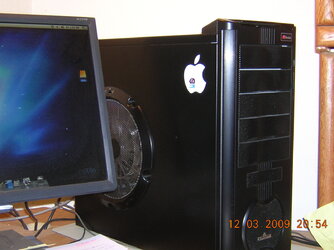- Joined
- Mar 31, 2010
Hi,
I have windows running on an SSD - C Drive and all my data is connected via x4hdds on drive D. I purchased another HDD which I want to break down into two partitions/drives and install hackintosh on one partition/drive and ubuntu on the other. So I'll have Windows on 1 SSD and Linux + Mac on 1 normal cheapie HDD.
Question is, how would I go about getting everything set up?
There's a million sites on this but each one is not quite the setup that I've got, so I'm not sure how to go about this.
I have windows running on an SSD - C Drive and all my data is connected via x4hdds on drive D. I purchased another HDD which I want to break down into two partitions/drives and install hackintosh on one partition/drive and ubuntu on the other. So I'll have Windows on 1 SSD and Linux + Mac on 1 normal cheapie HDD.
Question is, how would I go about getting everything set up?
There's a million sites on this but each one is not quite the setup that I've got, so I'm not sure how to go about this.
 Good luck
Good luck 